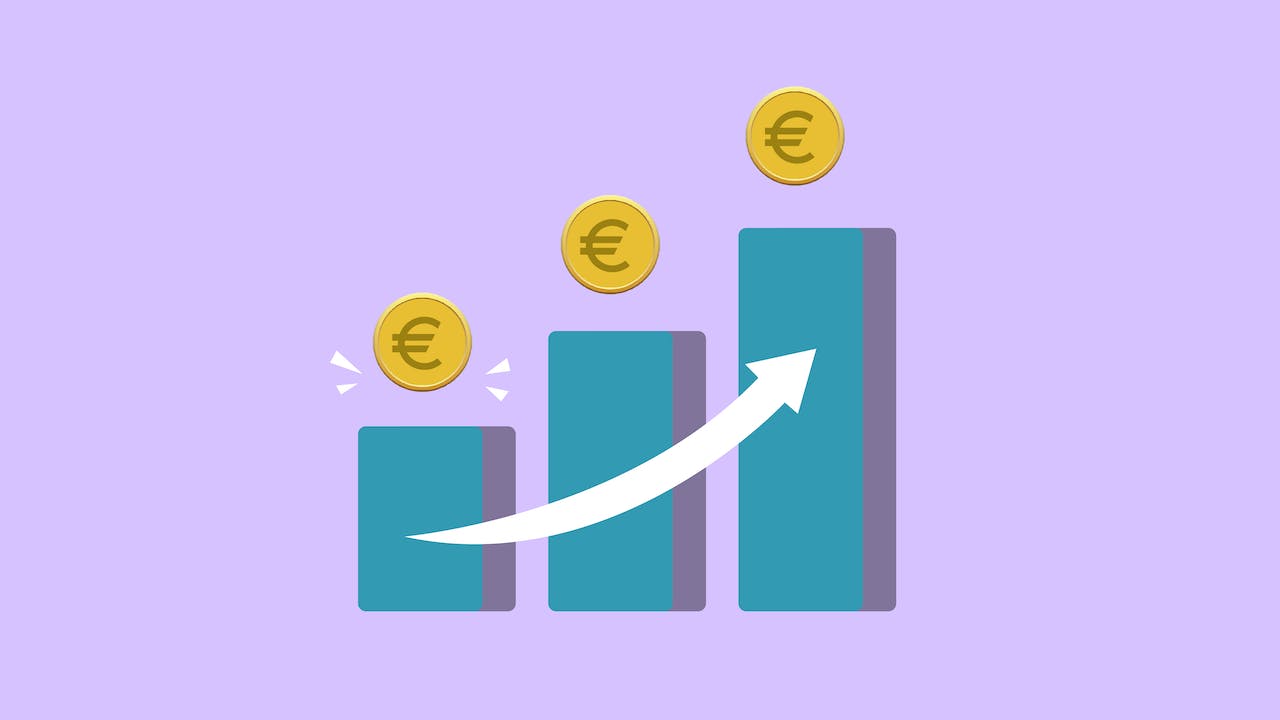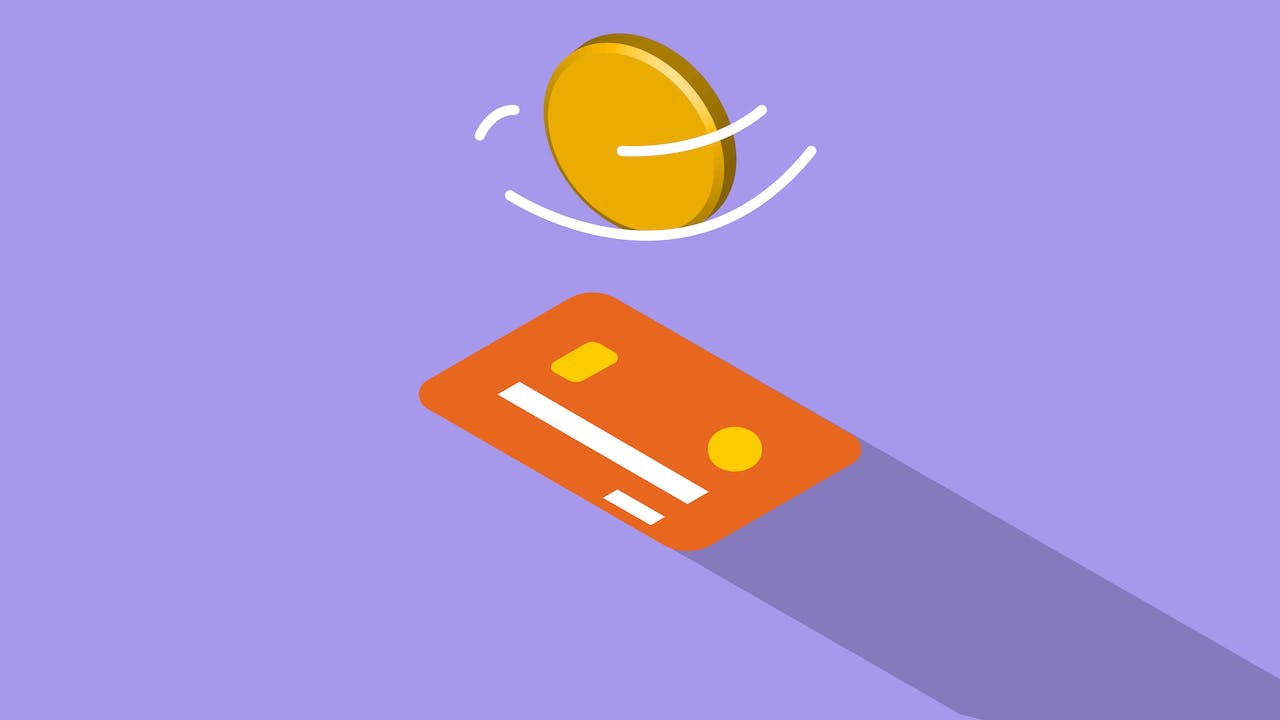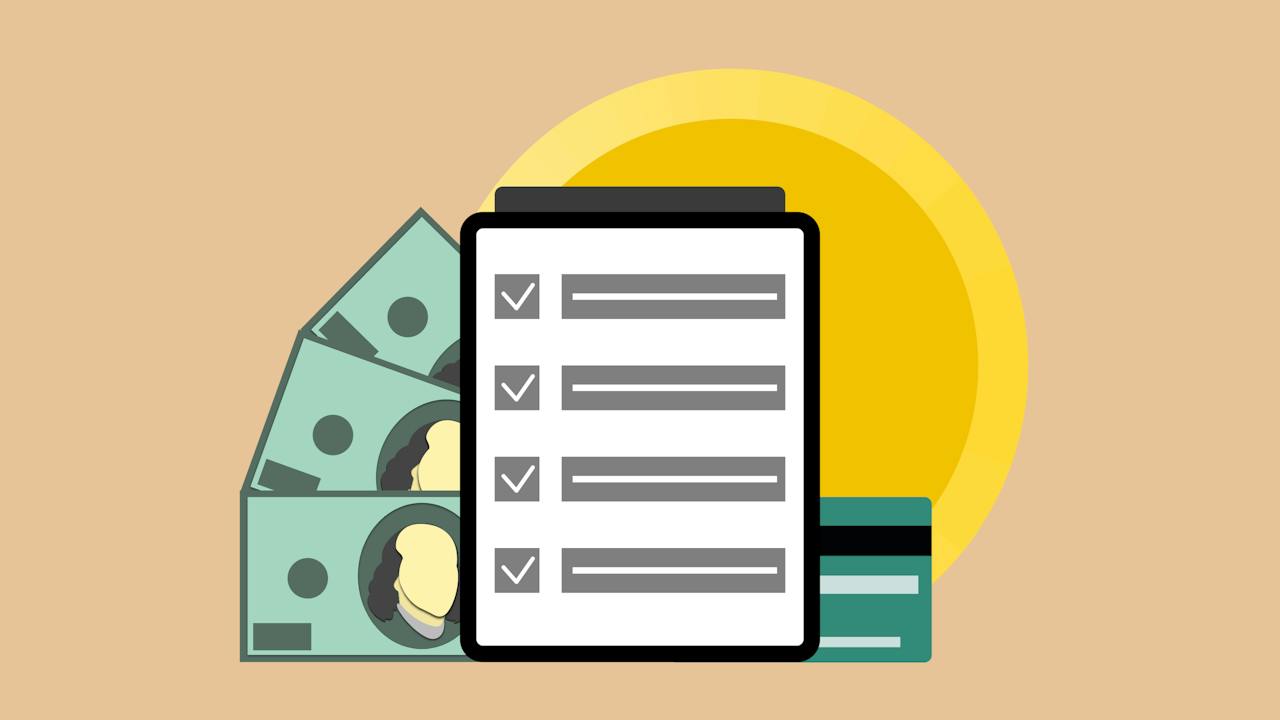What Factors Affect Interest Rates On High-yield Savings Accounts?
When it comes to high-yield savings accounts, understanding the factors that influence interest rates can be crucial. So, what factors affect interest rates on high-yield savings accounts? It's essential to delve into the key elements that impact the returns you can earn on your savings.

Morgan Barrons
Dec 01, 2023
High-yield savings accounts have become increasingly popular among savers seeking a better return on their money while maintaining liquidity and safety. These accounts offer interest rates that surpass traditional savings accounts, but the rates are not static and can be influenced by various factors.
Understanding these dynamics is crucial for individuals looking to optimize their savings strategy. In this article, you will delve into What factors affect interest rates on high-yield savings accounts? And explore the broader economic landscape that shapes these rates.
What Is A High Yield Savings Account?
Better-than-average interest rates on deposits are offered via high yield savings accounts, also known as high-interest savings accounts. High-yield savings accounts often provide interest rates that are much higher than the national average for conventional or regular savings accounts.
A high-yield savings account is perfect for holding short-term savings since it not only offers larger yields but also lets your money grow risk-free.
In contrast, a high-yield savings account often gives a competitive interest rate on all of your deposits. For instance, investing in the stock market may historically produce better yearly returns, but doing so also entails accepting the risk of market volatility and uncertain annual returns.
A high-yield savings account is an excellent choice if you want to build your funds without taking on the hazards of stock market investment, even if the interest rate is variable and subject to change.
How Do High-Yield Savings Accounts Work?
There are commonalities between various kinds of savings accounts and high-yield savings accounts. You can make frequent deposits and withdrawals from them, albeit there could be a limit on the total amount you can take out. Moreover, money transfers between accounts are possible.
Online-only banks and credit unions are usually the providers of high-yield savings accounts. Because they don't have as many overhead expenses as conventional brick-and-mortar banks, these organizations may raise their interest rates.
A high-yield savings account may need to be opened with a minimum deposit of $100 or more from the bank. However, you may also locate banks that don't charge for transfers, low balances, or upkeep if you look around.
Best Best High-Yield Savings Account Rates
- Popular Direct – 5.40% APY
- My Banking Direct – 5.35% APY
- North American Savings Bank – 5.35% APY*
- BrioDirect – 5.35% APY
- BluPeak Credit Union – 5.33% APY*
- Vio Bank – 5.30% APY
- Ivy Bank – 5.30% APY
- TAB Bank – 5.27% APY
- TotalDirectBank – 5.26% APY
- Milli – 5.25% APY*
- Newtek Bank – 5.25% APY
- UFB Direct – 5.25% APY
- Valley Direct – 5.25% APY
- Evergreen Bank Group – 5.25% APY
- CFG Bank – 5.25% APY
Benefits Of High-Yield Savings Accounts
Low-risk investmentswith higher interest rates, compound interest, and convenient access to your money when needed are all features of high-yield savings accounts.
High-Interest Rates
Rates are far higher than in conventional savings accounts so you may accrue sizable interest.
Compound Interest
Compound interest allows you to earn interest on interest, which accelerates the growth of your savings.
Access To Cash
Your money may be accessed at any moment after it is placed; no minimum term is required. However, there might be a limit on how many withdrawals you can make in a given month or year.
Easy Transfers To Another Account
Transferring funds between your high-yield account and other bank accounts is simple.
Risks Of High-Yield Savings Accounts
Suppose the inflation rate exceeds the annual percentage yield (APY) on your savings account. In that case, the most significant danger associated with high-yield savings accounts is the possibility of losing money due to inflation.
Because of this, high-yield accounts may not be the best option for long-term investments, such as retirement funds. A more excellent buffer against long-term inflation could be found in other savings or investment opportunities.
If the Federal Reserve reduces the benchmark interest rate, your interest rate on your high-yield savings account may likewise decrease due to variable interest rates. Make sure your deposit is protected by the FDIC (or, in the case of an online credit union, the National Credit Union Administration) if you keep your savings with an internet-only bank. You will always have access to your assets up to a total of $250,000 across all accounts if an FDIC or NCUA-insured institution fails. This is true regardless of whether your account is with an online-only or physical institution.
Certain businesses, like Credit Karma and Betterment, provide high-yield savings accounts by collaborating with banks that the FDIC covers to retain your funds and give you FDIC insurance protection on your deposits.
Furthermore, some high-yield savings accounts provide teaser rates, which are high enough to entice you to deposit money but drastically decline after a certain amount of time. Some people could have balance limits. These only apply the higher rate on a certain amount of money in your account, let's say up to $500. Alternatively, they can cap your interest profits at $25 or $50 annually.
Why Are Savings Interest Rates Increasing?
Recent Federal Reserve actions have increased savings interest rates. In an effort to fight inflation, the Federal Reserve increased interest rates many times in 2022 and 2023. Cheng says, "They're tightening monetary policy."
"A tightening of the financial system, or a rise in interest rates to make borrowing more costly for individuals, is one strategy to combat inflation. Their main goal is to control inflation without plunging the country into a severe recession."
Your savings account's interest rate will typically increase in response to a rate increase by the Federal Reserve. Interest rates on savings usually decrease when the Federal Reserve does.
Most significantly, compared to 2021 or 2022, the leading online banks are offering more fantastic CD and savings rates, and they have been raising rates in 2023.
The typical savings account pays.40%, according to the FDIC. Meanwhile, the superb CDs and savings accounts may provide returns of more than 5%.
What Factors Affect Interest Rates On High-yield Savings Accounts? & Reasons
Economic Conditions And Monetary Policy
Interest rates on high-yield savings accounts are intricately tied to broader economic conditions and the policies set by central banks. When the economy is solid, central banks may implement policies to prevent inflation by increasing interest rates.
This can positively impact high-yield savings account rates, providing better returns for savers. Conversely, during economic downturns, central banks may lower interest rates to stimulate spending and investment, which can lead to lower interest rates on savings accounts.
Inflation Rates
Inflation erodes the purchasing power of money over time. High inflation rates can diminish the real return on savings, prompting financial institutions to adjust their interest rates to compensate for the loss in purchasing power.
Savers should consider both nominal and real interest rates, factoring in inflation, to accurately assess the growth of their savings in high-yield accounts.
Market Competition
Competition among financial institutions is a crucial factor influencing interest rates on high-yield savings accounts. Banks and credit unions vie for customers by offering competitive rates to attract deposits.
When competition is fierce, financial institutions may raise their interest rates to entice savers. Conversely, in a less competitive market, institutions may lower rates without fear of losing customers to competitors.
Federal Reserve Rates
The Federal Reserve, as the central banking system in the United States, plays a pivotal role in shaping interest rates. The federal funds rate, which is the interest rate at which banks lend to each other overnight, serves as a benchmark for many other interest rates, including those on savings accounts.
Changes in the federal funds rate can have a cascading effect on the interest rates offered by financial institutions on high-yield savings accounts.
Credit Market Conditions
The overall health of the credit market influences interest rates on high-yield savings accounts. When credit markets are stable, financial institutions may have more confidence in lending, leading to higher interest rates for savers.
On the contrary, if there are concerns about the creditworthiness of borrowers and the stability of the financial system, interest rates on savings accounts may be adjusted downward.
Government Bond Yields
Government bonds serve as a benchmark for interest rates across various financial products, including high-yield savings accounts. As the yields on government bonds change, financial institutions may adjust the rates on savings accounts to remain competitive.
Investors often compare the rates offered on high-yield savings accounts with the yields on government bonds to assess the relative attractiveness of each option.
Operational Costs And Profit Margins
Financial institutions have operational costs associated with managing and maintaining savings accounts. These costs include administrative expenses, technology investments, and regulatory compliance.
To ensure profitability, banks and credit unions factor in these costs when setting interest rates on high-yield savings accounts. Savers should be mindful of the balance between attractive interest rates and the financial institution's stability and reputation.
Liquidity Needs
Financial institutions must balance the need to attract deposits with their liquidity requirements. If a bank or credit union has a pressing need for liquidity, it may adjust interest rates on savings accounts to attract more deposits.
Conversely, if an institution is flush with liquidity, it may be more conservative in offering higher interest rates.
Customer Relationship And Loyalty Programs
To retain existing customers and attract new ones, financial institutions may offer loyalty programs and additional benefits. Some banks may provide higher interest rates on high-yield savings accounts as part of loyalty programs or bundled banking services.
Savers should consider the overall value proposition, including interest rates and additional perks when choosing a savings account.
Regulatory Environment
Changes in financial regulations can impact the interest rates on high-yield savings accounts. Regulatory adjustments may affect how financial institutions operate and allocate resources, influencing the rates they offer to savers.
Staying informed about regulatory changes can provide insights into potential shifts in interest rates.
Frequently Asked Questions
What Is The Primary Factor Influencing Interest Rates On High-yield Savings Accounts?
The primary factor influencing interest rates on high-yield savings accounts is the prevailing economic conditions, including factors such as inflation rates, market competition, and monetary policies set by central banks.
How Does Inflation Impact Interest Rates On High-yield Savings Accounts?
Inflation can erode the real return on savings, prompting financial institutions to adjust interest rates on high-yield accounts to compensate for the loss in purchasing power.
Are High-yield Savings Account Rates Affected By The Federal Reserve's Decisions?
Yes, the Federal Reserve plays a crucial role in shaping interest rates, and changes in the federal funds rate can have a cascading effect on the rates offered by financial institutions on high-yield savings accounts.
Why Do Banks Adjust Interest Rates On Savings Accounts In A Competitive Market?
In a competitive market, banks may adjust interest rates on high-yield savings accounts to attract more deposits as institutions vie for customers by offering more competitive rates.
How Do Government Bond Yields Influence Interest Rates On Savings Accounts?
Government bond yields serve as a benchmark for interest rates, and financial institutions may adjust rates on high-yield savings accounts in response to changes in government bond yields.
What Role Do Operational Costs Play In Determining Interest Rates On High-yield Savings Accounts?
Financial institutions factor in operational costs, including administrative expenses and regulatory compliance, when setting interest rates to ensure profitability while remaining competitive.
Are Loyalty Programs And Additional Benefits Factors In Interest Rate Determination?
Yes, financial institutions may offer higher interest rates on high-yield savings accounts as part of loyalty programs or bundled banking services to retain and attract customers.
How Does The Overall Health Of The Credit Market Impact Interest Rates On Savings Accounts?
When the credit market is stable, financial institutions may have more confidence in lending, potentially leading to higher interest rates on high-yield savings accounts.
Can Changes In The Regulatory Environment Influence Interest Rates On High-yield Savings Accounts?
Yes, regulatory changes can impact how financial institutions operate and allocate resources, influencing the rates they offer to savers on high-yield savings accounts.
Why Do Financial Institutions Consider Liquidity Needs When Setting Interest Rates?
Financial institutions balance the need to attract deposits with their liquidity requirements, adjusting interest rates on high-yield savings accounts based on their current liquidity position.
In A Nutshell
This article aims to explain What factors affect interest rates on high-yield savings accounts? High-yield savings accounts offer a compelling option for individuals seeking better returns on their savings while maintaining flexibility and safety.
However, the interest rates on these accounts are subject to a myriad of factors, ranging from macroeconomic conditions to the competitive landscape of the financial industry. Savers should stay informed about these factors to make informed decisions about where to allocate their funds.
By understanding the dynamics that influence interest rates on high-yield savings accounts, individuals can navigate the financial landscape more effectively and optimize their savings strategy for the long term.




